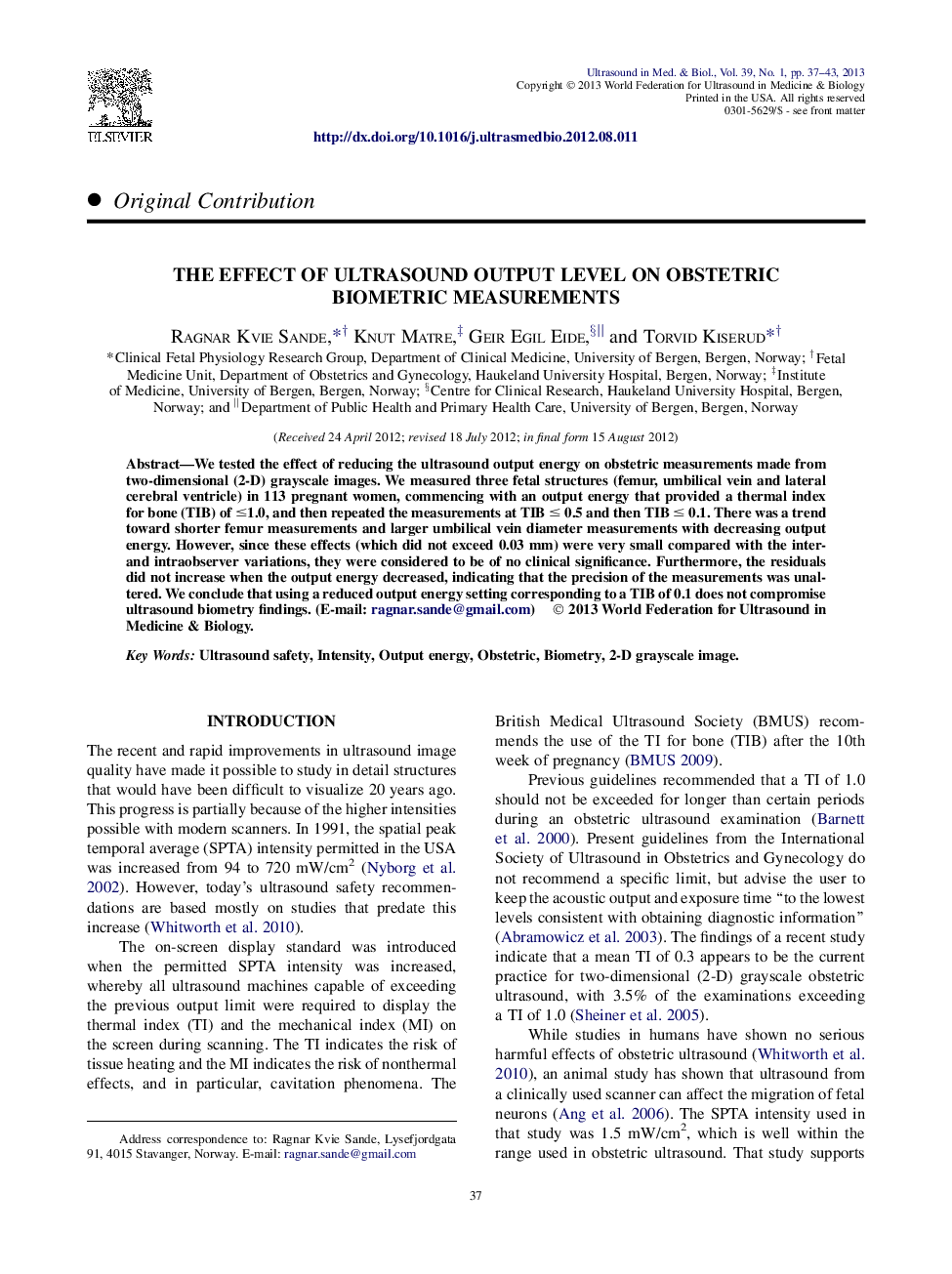| Article ID | Journal | Published Year | Pages | File Type |
|---|---|---|---|---|
| 1761387 | Ultrasound in Medicine & Biology | 2013 | 7 Pages |
Abstract
We tested the effect of reducing the ultrasound output energy on obstetric measurements made from two-dimensional (2-D) grayscale images. We measured three fetal structures (femur, umbilical vein and lateral cerebral ventricle) in 113 pregnant women, commencing with an output energy that provided a thermal index for bone (TIB) of â¤1.0, and then repeated the measurements at TIB ⤠0.5 and then TIB ⤠0.1. There was a trend toward shorter femur measurements and larger umbilical vein diameter measurements with decreasing output energy. However, since these effects (which did not exceed 0.03 mm) were very small compared with the inter- and intraobserver variations, they were considered to be of no clinical significance. Furthermore, the residuals did not increase when the output energy decreased, indicating that the precision of the measurements was unaltered. We conclude that using a reduced output energy setting corresponding to a TIB of 0.1 does not compromise ultrasound biometry findings.
Related Topics
Physical Sciences and Engineering
Physics and Astronomy
Acoustics and Ultrasonics
Authors
Ragnar Kvie Sande, Knut Matre, Geir Egil Eide, Torvid Kiserud,
